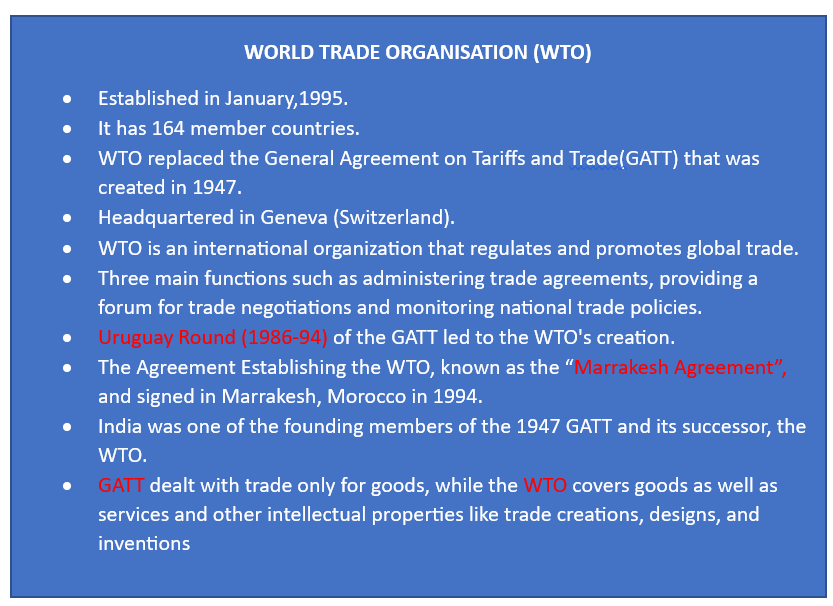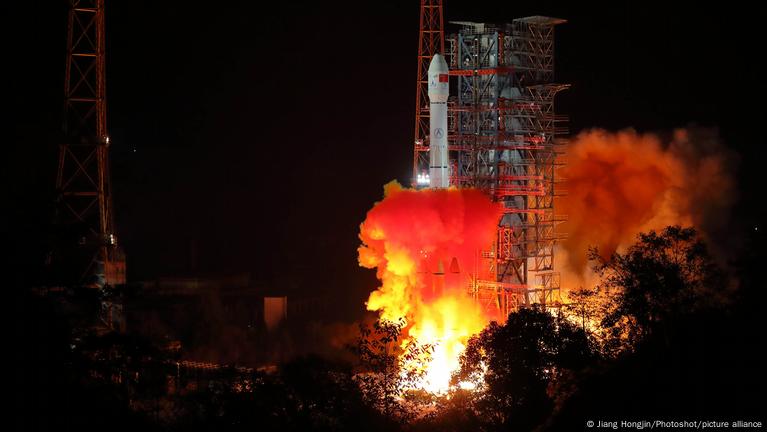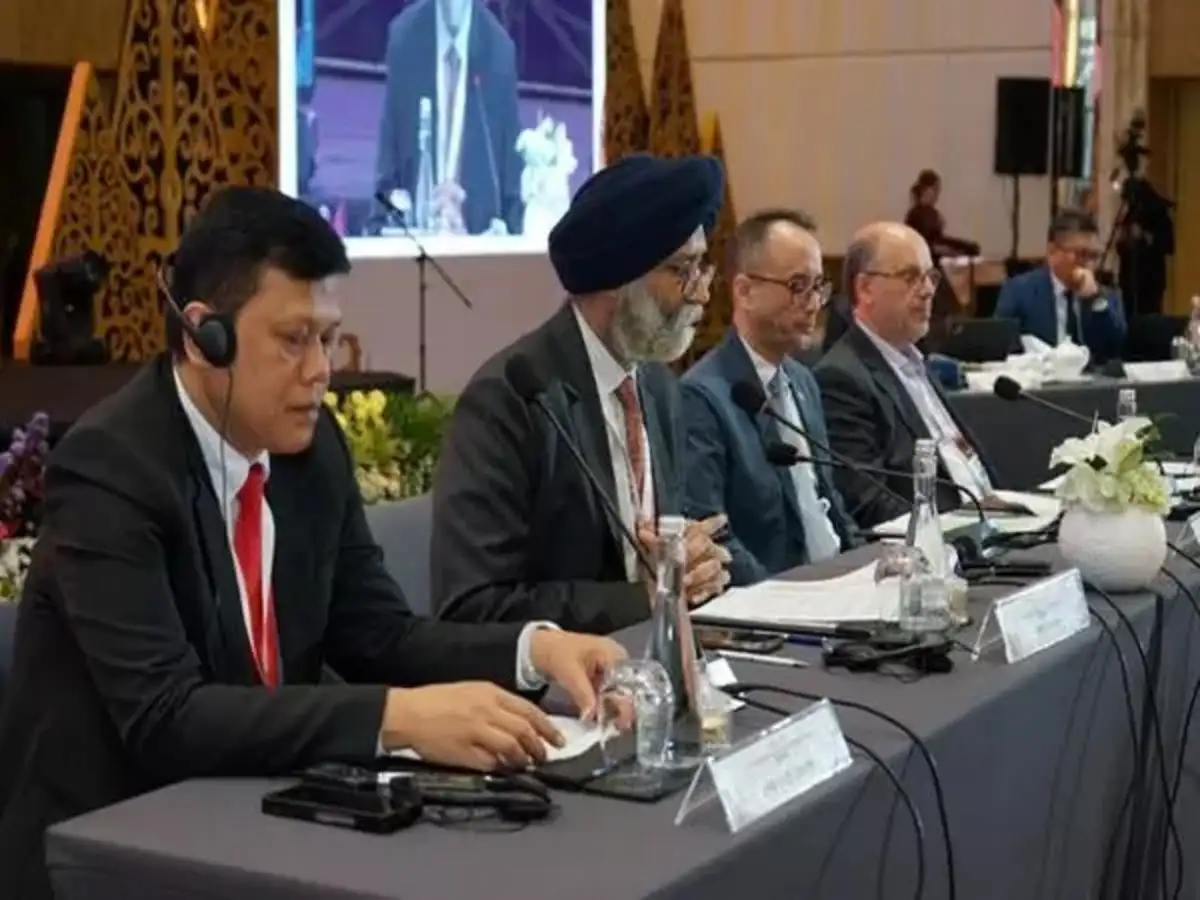- Courses
- GS Full Course 1 Year
- GS Full Course 2 Year
- GS Full Course 3 Year
- GS Full Course Till Selection
- Online Program
- GS Recorded Course
- NCERT (Recorded 500+ Hours)
- Polity Recorded Course
- Geography Recorded Course
- Economy Recorded Course
- AMAC Recorded Course
- Modern India, Post Independence & World History
- Environment Recoded Course
- Governance Recoded Course
- Science & Tech. Recoded Course
- International Relations and Internal Security Recorded Course
- Disaster Management Module Course
- Ethics Recoded Course
- Essay Recoded Course
- Current Affairs Recoded Course
- CSAT
- 5 LAYERED ARJUNA Mentorship
- Public Administration Optional
- ABOUT US
- OUR TOPPERS
- TEST SERIES
- FREE STUDY MATERIAL
- VIDEOS
- CONTACT US
WTO NEEDS TO LOOK AT FARM SUBSIDIES
WTO NEEDS TO LOOK AT FARM SUBSIDIES
05-05-2023
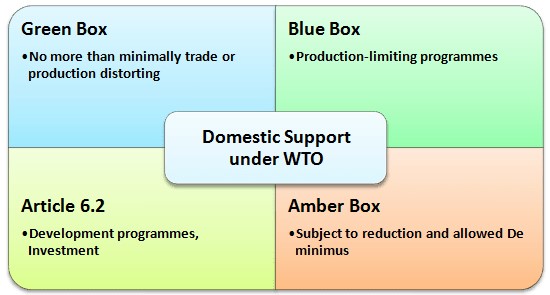

Latest Context
The finance minister of India urged the World Trade Organisation (WTO) to look at the issue of farm subsidies with an open mind as it impacts the food security needs of emerging economies in the backdrop of COVID-19 pandemic and the Russia-Ukraine war.
- The Finance Minister of India said this at the Asian Development Bank
(ADB) Governor’s seminar on ‘Policies to support Asia’s rebound.
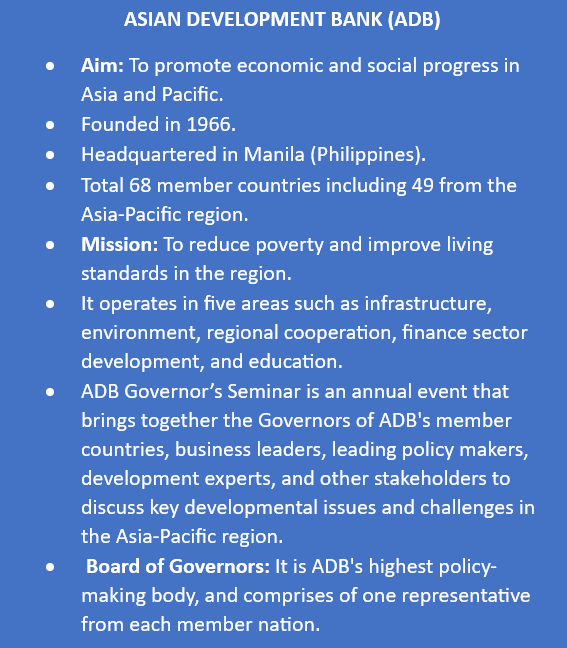
Various Subsidies under WTO
- Amber Box: These subsidies can distort international trade by making a country's products cheaper in comparison to those of other countries. Examples such as fertilisers, seeds, irrigation, electricity, and Minimum Support Price (MSP).
- Under WTO rules, member countries are allowed to provide Amber box subsidies, but their use is subject to certain limitations and disciplines.
- Signatories are required to reduce trade-distorting domestic supports that fall into the amber box.
- Aim: To ensure that Amber box subsidies are use in a way that minimizes their impact on international trade and supports the development of sustainable agriculture.
- Di Minimus Clause: It is derived from Latin word which means ‘’ too trivial to be considered’’. It is a provision in international trade agreements that allows countries to provide exemptions for certain low-value transactions from trade regulations or tariffs.
- 10% for developing countries.
- 5% for developed countries.
- Blue box: Subsidies are considered to be less trade-distorting than the Amber box subsidies, as they are linked to production controls or land diversion programs that aim to reduce surpluses and stabilize markets. Currently, there are no limits on spending on blue box subsidies.
- Green Box: Subsidies are considered to be non-trade-distorting, meaning they have a minimal impact on international trade.
- Aim: To ensure that they do not create unfair trade advantages, and that they support sustainable and environment-friendly agricultural practices.
- subsidies are government funded without any price support to crops.
Causes to Relook into Subsidy Norms
- Unequal Opportunities to Global South: Some argue that the rules and structures of WTO tend to favour developed countries and multinational corporations. ‘Global South’ refers to the Asia, South America and Africa.
- Challenges with Food Subsidy Limit: Many developing countries argue that these limits can prevent them from providing food subsides to their populations, which can be necessary to address food insecurity and poverty.
- Rise Food Insecurity: Due to Russia-Ukraine conflict and Covid-19 pandemic have once again emphasized to relook the subsidy norms as fertilizer and food security have become more important now.
- India’s Demand: India asked for measures like amendments in the formula to calculate the food subsidy cap and inclusion of programmes implemented after 2013 under the ambit of ‘Peace Clause’.
WTO’s Peace Clause
- It is a provision that allows developing countries to continue providing subsidies to their agricultural producers, even if those subsidies exceed the limits set by the WTO’s Agreement on Agriculture (AoA), without fear of facing trade sanctions.
- First introduced in 2013 in Bali Ministerial Conference.
